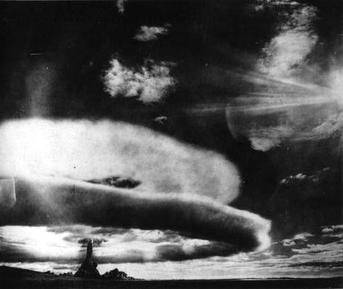The Cold War, a period fraught with tension, competition, and fear, was forever altered on October 6, 1951. This was the day when Joseph Stalin, the Soviet Premier, made a momentous announcement — the Soviet Union had successfully developed an atomic bomb. This declaration, with its profound implications, reshaped the global power dynamic and reverberated across the world, shattering the United States’ monopoly on deadly nuclear weapons.
Interesting Facts:
- On October 6, 1951, Soviet Premier Joseph Stalin officially announced that the Soviet Union had an atomic bomb, confirming what many in the West feared after the Soviets’ successful test in 1949.
- Stalin’s declaration fueled the nuclear arms race between the U.S. and the Soviet Union, as both powers worked to build more significant and more destructive stockpiles of weapons.
- The Soviet Union detonated its first atomic bomb, codenamed RDS-1, on August 29, 1949, but Stalin’s public announcement in 1951 formalized the Soviets’ entry into the nuclear arms race.
- The Soviet Union’s rapid development of the atomic bomb was significantly aided by intelligence from spies, particularly those embedded in the Manhattan Project. These spies provided the USSR with crucial details on U.S. nuclear advancements, underscoring the intense intrigue and espionage that characterized the Cold War era.
- Stalin’s claim sent shockwaves through the international community, signaling that the balance of power had shifted. It ended the U.S.’s monopoly on nuclear weaponry and created an era of mutual atomic deterrence known as “Mutually Assured Destruction” (MAD).
- Cold War Context: Stalin’s announcement came during the height of the Cold War, a period characterized by military build-ups, espionage, and the looming threat of nuclear conflict between the superpowers.
- Globally, Stalin’s declaration marked a pivotal point in history, changing the course of global politics, diplomacy, and warfare for decades.

